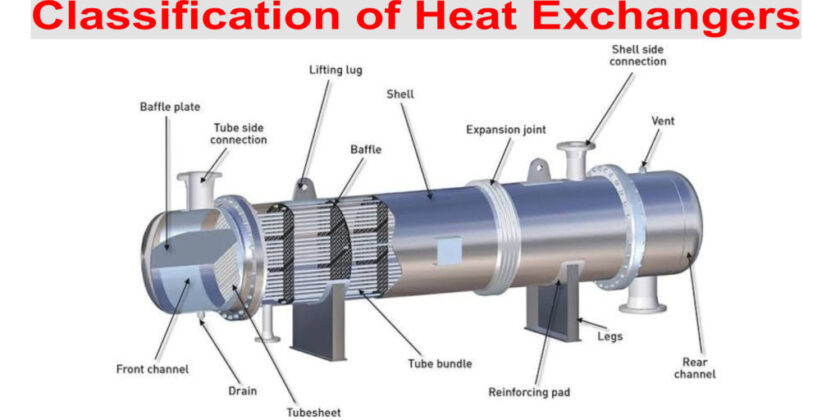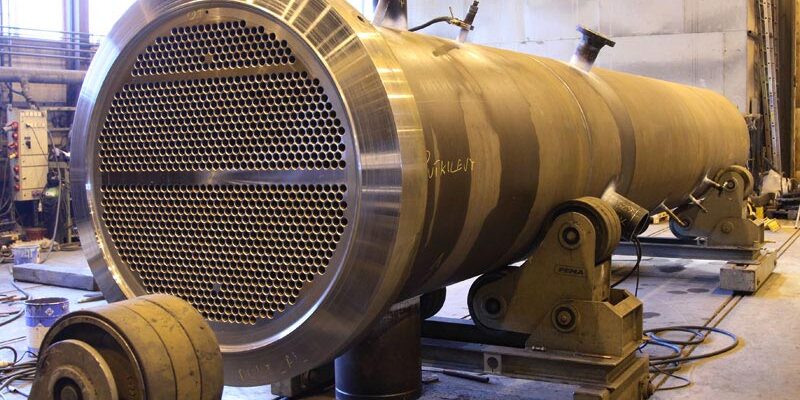Classification of Heat Exchangers

1.Based on principle of operation heat exchangers
(a) Recuperative
(b) Regenerative
(c) Direct contact
In recuperative type of heat exchangers, cold and hot fluid flow through the unit without mixing with each other. The transfer of heat occurs through the metal wall. Examples of recuperative heat exchangers are boilers, heaters, coolers, vaporizers, condensers etc.
Regenerative type of heat exchangers same heating surface is alternately exposed to hot and cold fluid.
Heat associated with hot fluid is stored or absorbed by pickings or solids. The hot fluid supply is then shut off and cold fluid is passed over pickings or solids to regenerate the heat.
Example of such type of heat exchangers is re generators of open hearth furnace, glass melting furnace etc.
Recuperative and regenerative units can also be called as surface condensers,
In direct contact type of heat exchangers hot and cold fluids are in direct contact and mixing Occurs among them during the process of heat transfer. Mass transfer also occurs simultaneously.
Examples of direct contact type of heat exchangers are spray columns cooling towers, scrubbers etc.
2. Based on flow pattern the heat exchangers
(a) Co-current
(b) Counter-current
(c) Cross flow
In co-current flow-arrangement hot and cold fluid flow in the same direction. It is also called as parallel flow arrangement. In counter current flow arrangement hot and cold fluid moves in opposite directions.
In cross flow arrangement hot and cold fluids move at right angles to each other.
3. Based on function of heat exchangers
(a) Chiller
(b) Heater
(c) Evaporator
(d) Cooler
(e) Partial condense
(f) Vaporizer
(g) Re-boiler
(h) Condenser
(i) Steam generator
(j) Waste heat boiler
4. Based on type of construction
(a) Shell and tube type
(b) Bayonet type
(c) Double pipe
(d) Air cooled
(e) Spiral type
(f) Plate type
![]()





